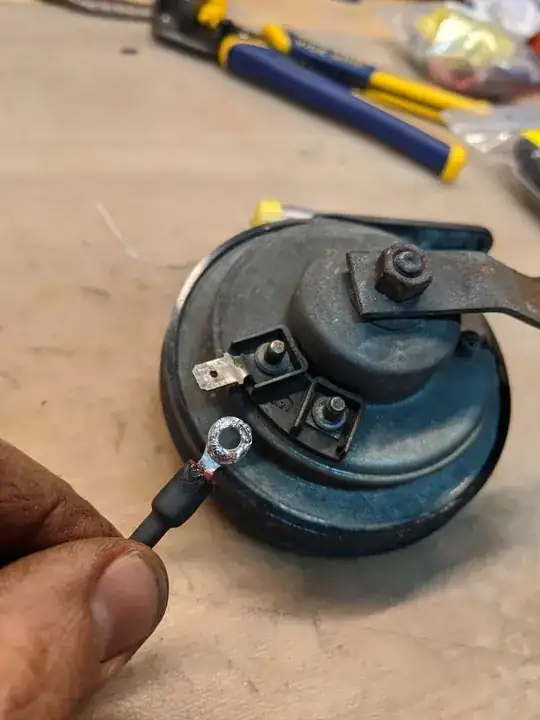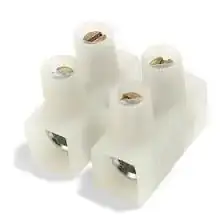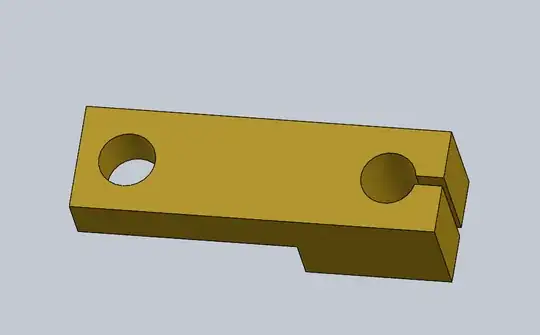I don't think it's wise to solder it back on. A car is subjected to a lot of vibrations, and solder does not make a good mechanical bond (it will break).
I would try instead to break that pressed rivet thing with a Dremel-like tool and then replace the tab and press a new rivet into place using a small washer, small tube and a hammer. Fill the voids with solder.
Another option would be to attempt to weld a new tab on, but considering the small size, you would need high quality welding equipment to avoid just vaporizing what's left of the tab. Also you would need to figure out how to ground the part…
If you want to go the solder way, try to find a way to nudge your wire under what's left of the tab. Clean it thoroughly using abrasives and flux, then pry the tab and rivet, wrap the wire around it and fill any gap you see with solder, to stop the wire from unwrapping itself.
Is all the trouble worth the repair? A horn is a critical safety element and you will know it does not work only when you actually need to use it.
Just to reiterate: putting the ring terminal onto the rivet post thingy and adding solder will not hold it in place. The solder will break. Think of solder not as glue, but as being similar to tying the loose end of a rope just to help prevent the main knot from untying.


